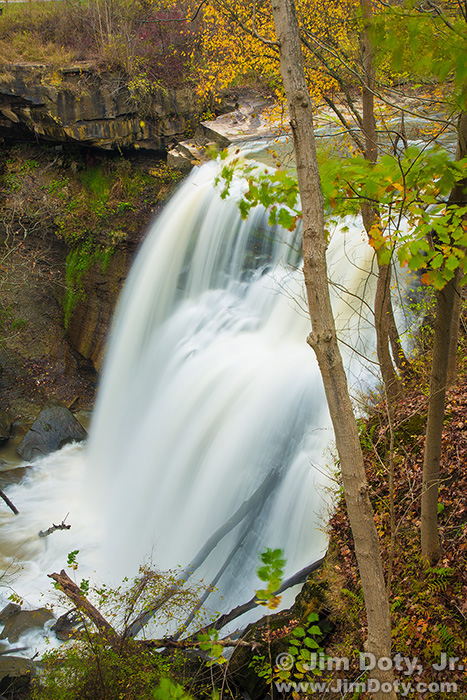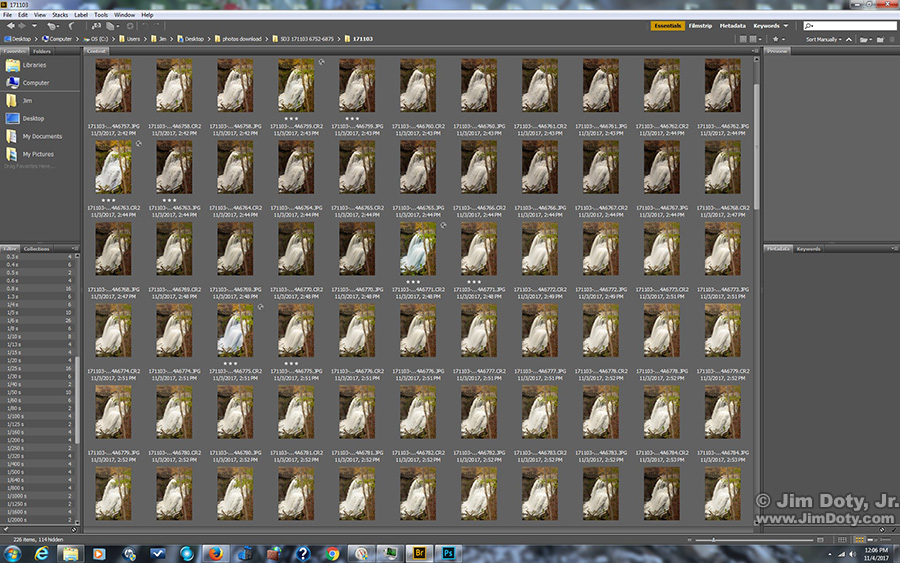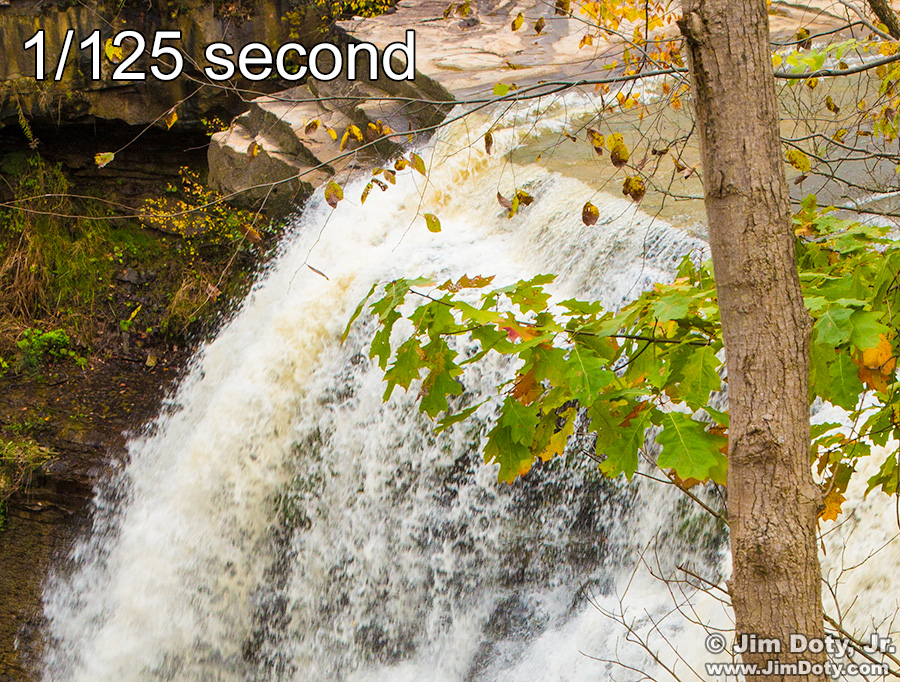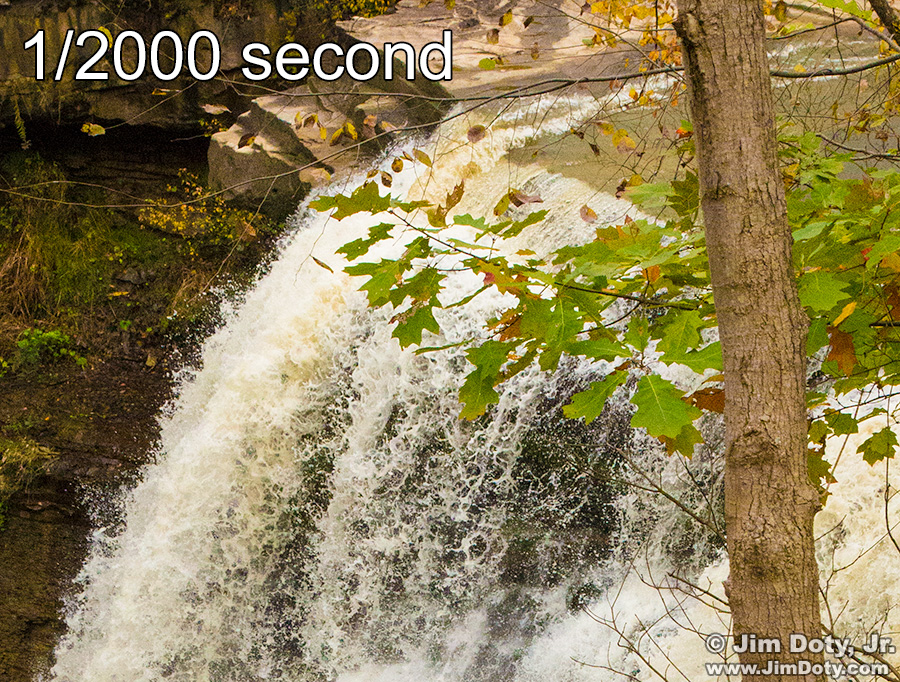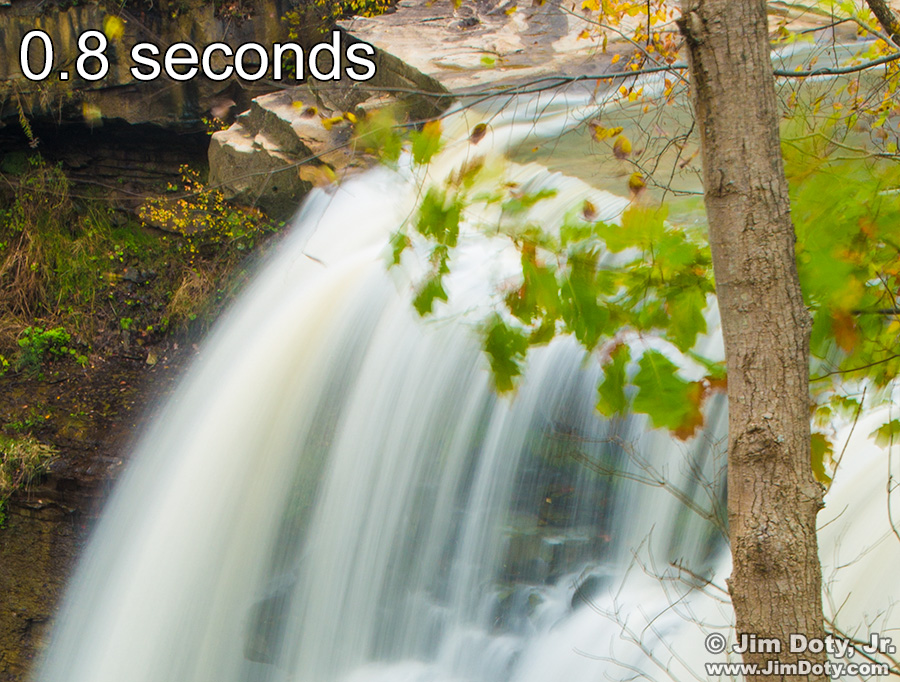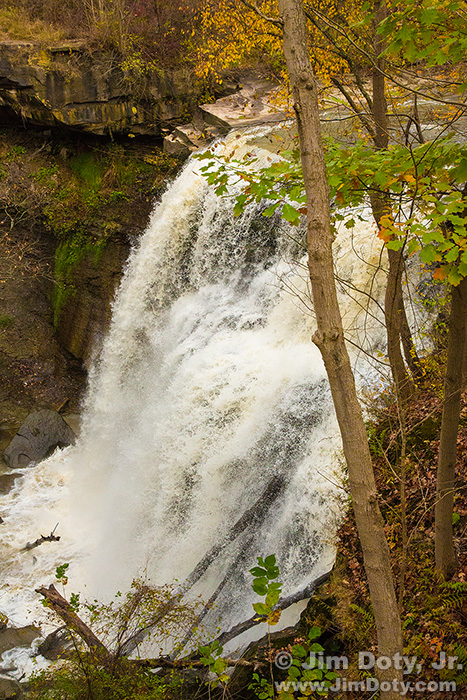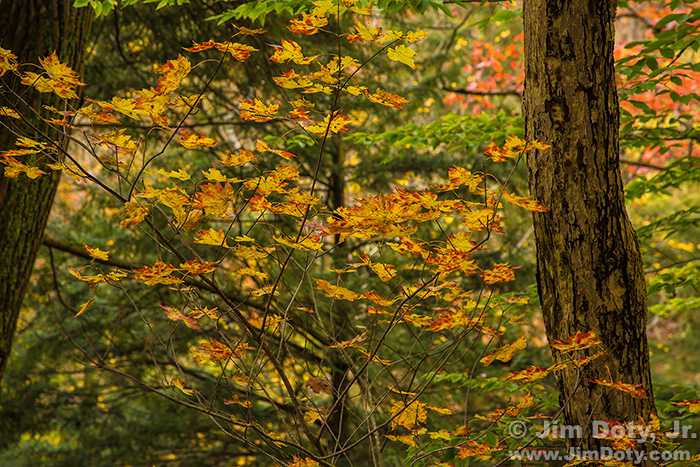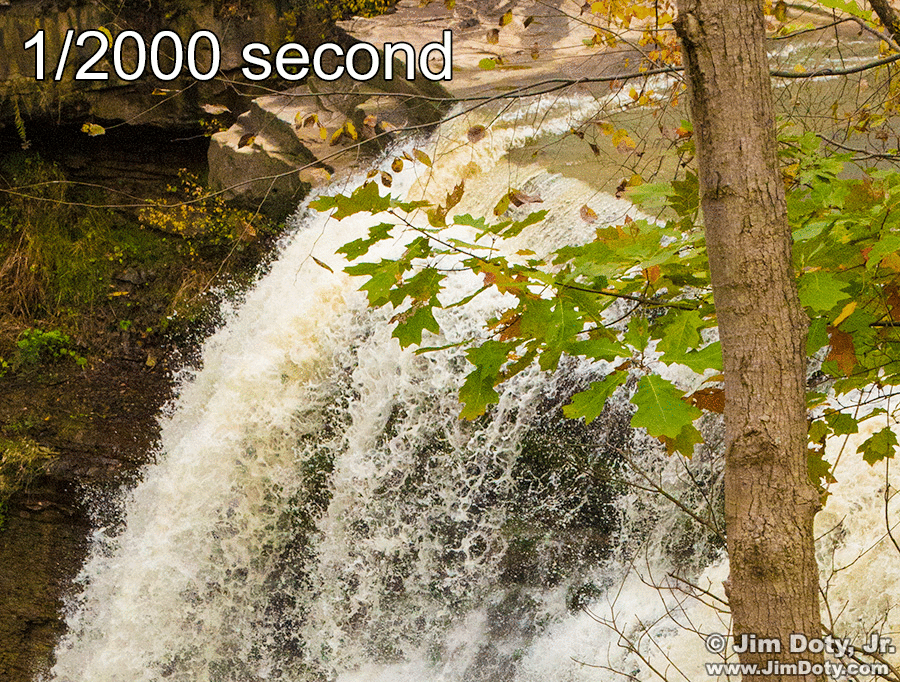
Three different exposure combinations at Brandywine Falls, all of them cropped from larger images. Click for a larger version.
Another photographer and I were shooting together yesterday at Brandywine Falls in Cuyahoga National Park. During the time we were there we saw dozens of people taking pictures of the waterfall. Most of them were in full auto-exposure mode, making no personal changes in their exposure settings whether they were photographing the waterfall, each other, or the leaves in the trees. I bet most of them had no idea that they had turned important artistic decisions over to a computer chip.
Every exposure decision is an artistic decision. There are dozens of aperture, shutter speed, and ISO combinations that will give you exactly the same exposure but very different artistic looks. If you take control of the exposure decisions you also take control of the “look” of your images. In auto-exposure mode your camera has no idea how you want your waterfall to look, or anything else.
Brandywine Falls was a good opportunity for me to create another shutter speed demonstration for my photography classes and workshops.
I had three challenges. The varying amount of cloud cover kept messing with the color temperature of the light, plus the sun would occasionally pop out. I initially did a custom white balance but the rapidly changing color temperature of the light made that an exercise in futility. I decided to deal with that after the fact in Adobe Camera Raw. The light level was also changing so I had to re-meter on a regular basis.
A breeze kept messing with the leaves which was an inescapable problem with the longer exposures. I would wait long periods of time and pick the moments with the least breeze fro the longer shutter speeds. The breeze never did go completely away.
And finally, Brandywine Falls is a popular place. There was almost always several people on the wooden deck platform and the connected stairs. If anyone on the deck or the attached stairs moved at all, my images at longer shutter speeds were slightly blurred. I would wait until no one was moving to click the shutter. Even at that it took seven tries at 0.8 seconds to get one sharp image. It took multiple tries at the other long shutter speeds too.
As you can see from this screen capture in Adobe Bridge I took a lot of pictures with a wide range of shutter speeds from 1/2000 second to 0.8 seconds. At most of the faster shutter speeds I needed only one shot to get what I wanted. Every change of shutter speed meant a change in aperture and/or ISO to keep the desired exposure.
With the existing light conditions I had to boost the ISO all the way up to 6400 to get to 1/2000 second. With the ISO at 100 I had to add a polarizing filter and stop down to f/22 to get the slowest shutter speed. Had I needed to go longer than 0.8 seconds I had a variable neutral density filter with me which would allow me to go to a shutter speed as much as eight stops slower, but that would not solve the issue of people moving on the platform.
Every waterfall is a little different, but in general a shutter speed around 1/60 or 1/125 second will give you a “realistic” looking waterfall.
The human eye lacks the ability to freeze the details of a high speed subject, so if you want to “freeze” a waterfall and capture every single water drop, you generally need to get up around 1/1000 second.
If you want to go to the other extreme and create a gauzy, smooth, “angel hair” water fall, again creating an image the human eye can’t see, you need a shutter speed around 1 second.
You will need to experiment a bit. Every waterfall has a different amount of “splashability” so your shutter speeds may vary. You can choose any look you want, including anywhere in between realistic and gauzy, or between realistic and frozen. The cool thing about controlling the exposure choices yourself is you can create the look YOU want.
Location tip. If you go to Brandywine Falls I suggest you try shooting from both decks. Personally I prefer the upper deck because I can catch the top of the falls without getting the mundane bridge in the background.
Links
To learn all about exposure, read Digital Photography Exposure for Dummies, one of the highest rated photography books at Amazon.com. It is also one of the most comprehensive books on exposure, so you don’t have to buy a second or third book to learn intermediate and advanced exposure skills. Learn more here and order it here.
Cuyahoga Valley National Park in northern Ohio is a nice place to create images, especially in the fall.

